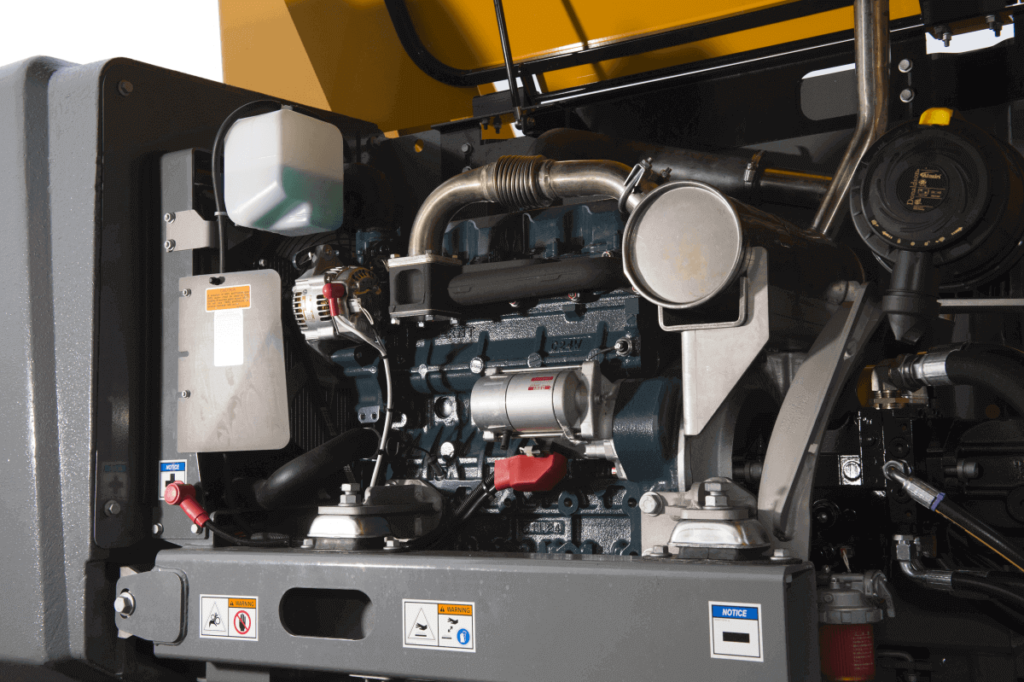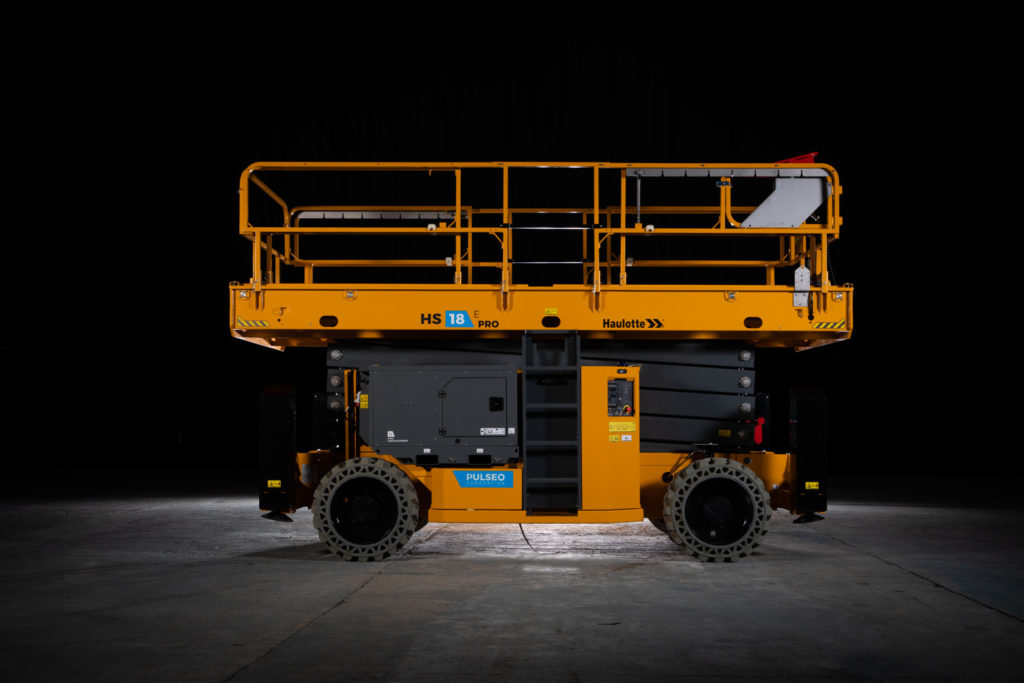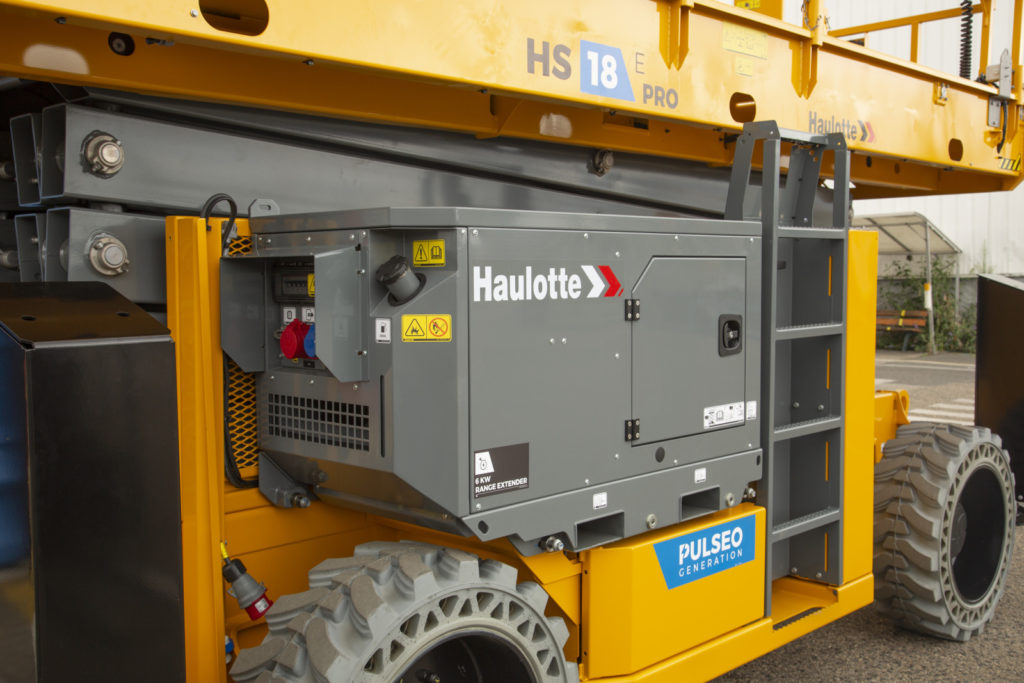Energy is a significant issue for designers and manufacturers of vehicles, whether used for personal or professional mobility. As an important player in the lift market, Haulotte is committed to developing new driving energies for its machines to limit CO2 emissions and respect the environment. But the balance remains difficult to put an end to the use of fossil fuels such as oil. These new solutions, such as electric (with battery or fuel cell), must be economically competitive, efficient in their use, satisfy customers and respect the environment. And there is an urgent need to meet the climate challenges and the objectives set by the European Union of zero carbon by 2050.
Haulotte brought together several experts for a round table discussion on the subject: a rental company, an automotive equipment manufacturer, an energy company, and researchers discussed the future of energy, particularly in the field of motorization, and the stages of a successful transition from thermal to electric.
What energy transition?
« The energy sector has changed more in 10 years than in a century. Oil and gas, fossil fuels, are still dominant, but the transition is underway towards alternatives such as photovoltaic, wind, biogas, and hydrogen. These energies are going to become increasingly accessible, » says the electricity supplier, which is very involved in the development of hydrogen fuel cells.
« The great revolutions of today in the industrial field are those of the environment and the energy transition, as well as that of data. For example, electric vehicles are equipped with intelligent elements, with software, which can be updated remotely. The other challenge in our ecosystem is the circular economy. Today, when a part is damaged, we change everything.
So, we need to move towards recycling and remanufacturing products, » adds an automotive equipment manufacturer. « The energy transition means moving from a single mobility, with oil as the energy source and the combustion engine as the converter, to multiple mobilities, with several energy and converter solutions depending on usage, » summarizes a researcher specialized in energy and mobility.
« And data is essential to qualify these uses; it is a tool to help in the decision for the best trajectory in energy use. The other challenge in this transition is to consider the impact in terms of CO2 emissions of the entire manufacturing and end-of-life process. So, we have to study the entire cycle ».


Strong demand
There is now an urgent need for competitive, high-performance, carbon-free machines for mobility professionals, especially on construction sites.
« Our customers are asking for them on construction sites. So, in the specifications for construction, limiting CO2 emissions is becoming central. And in the big cities, with the low emission zones (LEZs), we will no longer be able to come with our diesel machines in a few months. So, we need to come up with concrete solutions quickly, » stresses a significant player in professional equipment rental.
But for the moment, carbon-free vehicles suffer from a handicap compared to combustion engines. The difficulty lies in the ease of access to the means of recharging the engines!
Crossing the boundaries of electric
« We don’t yet know how to make hydrogen competitive. And for electric vehicles, there are two obstacles: autonomy, real or supposed, and acceptable cost. Nuclear power provides cheap, low-carbon electricity. But this technology generates waste in the very long term. So, we need to look at the overall energy balance and move towards renewable energies with the least amount of waste possible, » says the representative of a research institute specialized in energy and mobility.
« Electrics provide comfort, particularly in terms of acoustics. But the autonomy of electric tools on construction sites is a real issue. Indoor machines do not pose a problem. But an electric shovel, for example, has only 2.5 hours of autonomy. Recharging it requires a change in the way work is organized. We are still testing these new machines to give feedback to the manufacturer on their use with the data collected. We believe that these machines can be co-developed by designers and users, » emphasizes this equipment rental company.


Uses at the heart of the energy transition
The user and the uses are at the heart of the energy transition.
« The situation is different between individual vehicles and the equipment used in the professional world. The public buildings and works sector, for example, is further ahead with the shared use of equipment through rental companies. The public buildings and works groups have given up ownership. If hydrogen vehicles are expensive to produce, one of the solutions lies in sharing. Today, there are shortages of materials and rare metals, which are becoming expensive. Just like energy, the price is rising. We will therefore need good management of resources and materials through sharing. Thus, moving from a society of possession to an economy of services, » says a researcher in new mobilities.
« Hydrogen is the right solution for professional equipment because it delivers a lot of energy for intensive use with a fast charge. Today, hydrogen costs around 1000 euros per kWh. The goal is to reach 30. But it won’t happen overnight because there is resistance. Moreover, the technological innovations for the electric vehicles did not come from the historical car manufacturers, but from newcomers like Tesla », notes an energy company.
A rapid transition
« China was always behind in thermal engine innovations. They chose to abandon this competition to make a technological leap and put all their forces in the electric. In the automotive sector, electric vehicles are going to be dominant. We know that our clutch and alternator manufacturing plants will be doomed in the long term because this equipment will not be used in electric vehicles. So, we are transforming our factories to produce electric motors for small mobility objects, » says an automotive equipment manufacturer.
« The challenge is to transform the fleet from thermal to electric. This will take 10 years. We will therefore have to find economies of scale and work on volumes. And that in the short term, » concludes the rental company of professional equipment.